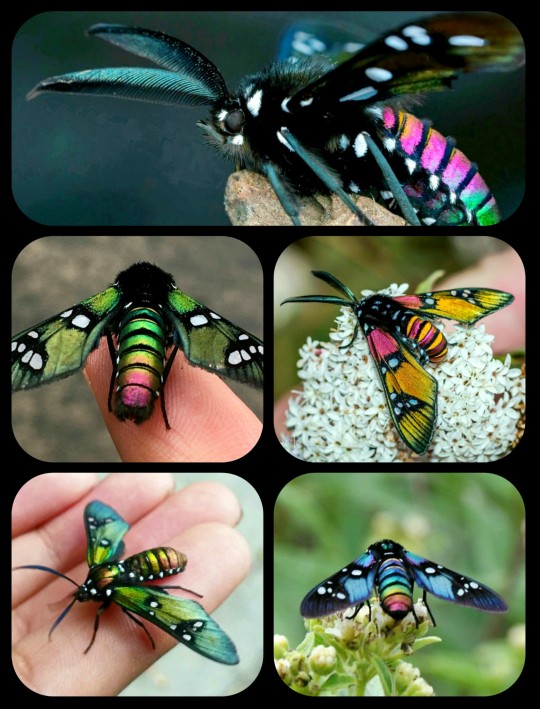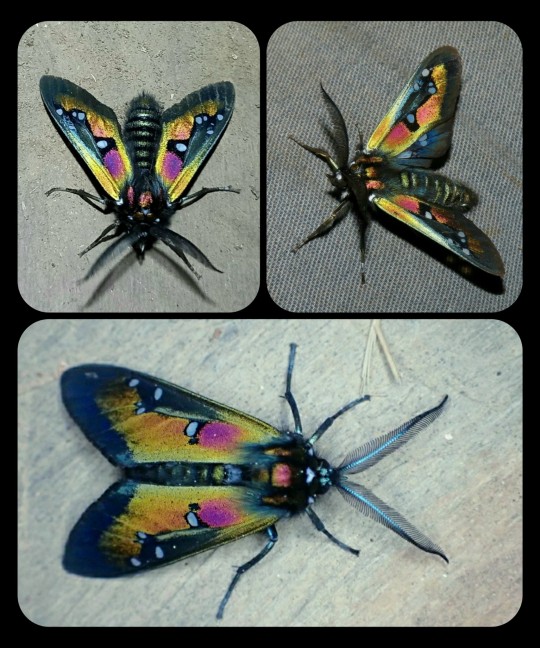#central mexico
Explore tagged Tumblr posts
Text

Tres Zapotes is a Mesoamerican archaeological site located in the south-central Gulf Lowlands of Mexico in the Papaloapan River plain. Tres Zapotes is sometimes referred to as the third major Olmec capital (after San Lorenzo Tenochtitlán and La Venta), but the Olmec phase is only a portion of the site's history,[1] which continued through the Epi-Olmec and Classic Veracruz cultural periods.
2 notes
·
View notes
Photo

Earthenware female figurine, Chupicuaro culture (central Mexico) , 300 BC - 100 AD
The Walters Art Museum
27 notes
·
View notes
Text

Is All Mexican Food Hot, Spicy, and Fattening
Mexican cuisine is popular for being fiery, spicy, and fattening. But it includes a wide variety of meals, many of which are mild in flavor or nutritious. You can cook Mexican cuisine that would not burn your face off or make you gain weight by putting in a little effort to find the correct recipes and making a few adjustments. Keep reading to learn how to make your Mexican food lighter. Or if you want to eat your favorite and best Mexican Cuisine while living in Hong Kong, come to La Vista.
0 notes
Text


Anna's Eighty-Eight or Finita Burrasca (Diaethria anna), family Nymphalidae, found in much of Central and South America
photos: Charles J. Sharp & Gabriel Bienzobas Fernandez
#88 butterfly#butterfly#eighty eight butterfly#diaethria#nymphalidae#lepidoptera#insect#entomology#animals#nature#mexico#central america#south america
2K notes
·
View notes
Note
Can I request an ocellated turkey please


#central american bird#central america#yucatan peninsula#mexico#belize#guatemala#birds#birding#animal polls#my polls#poll blog#animals#polls#tumblr polls#bird#turkey#ocellated turkey
371 notes
·
View notes
Text

And you thought dinosaurs were extinct. *cackles and fluffs feathers*
Great Curassow (Crax rubra)
Central America and northern South America
Status: Vulnerable
---
I love that the female is more showy - so rare for birds.
#curassow#ground bird#bird#bird art#birdlr#birbs of tumblr#artists on tumblr#central america#south america#mexico#guatemala#honduras#nicaragua#costa rica#panama#columbia#ecuador
288 notes
·
View notes
Text
BOTD: Red-tailed Hawk

Photo: Kent Ross
"This is the most widespread and familiar large hawk in North America, bulky and broad-winged, designed for effortless soaring. An inhabitant of open country, it is commonly seen perched on roadside poles or sailing over fields and woods. Although adults usually can be recognized by the trademark reddish-brown tail, the rest of their plumage can be quite variable, especially west of the Mississippi: Western Red-tails can range from blackish to rufous-brown to nearly white."
- Audubon Field Guide
#birds#red tailed hawk#birds of north america#north american birds#hawks#raptors#birds of prey#birds of the us#birds of canada#birds of mexico#birds of central america#birds of the caribbean#birding#birdblr#birblr#bird of the day#bird watching#Buteo jamaicensis
213 notes
·
View notes
Text

Central Avenue, Albuquerque, New Mexico, mid-1960s
#Central Avenue#Route 66#Albuquerque#New Mexico#art#design#architecture#urbanism#signs#billboards#billboard#sign
264 notes
·
View notes
Text
The Princely Tiger Moth: these strikingly colorful moths can be found in Mexico, Guatemala, and Honduras

The princely tiger moth (Chrysocale principalis) has a unique, almost rainbow-like appearance, with iridescent/metallic scales that produce a broad range of colors across the wings, thorax, and abdomen. These colors can include shades of pink, gold, green, blue, and purple.

This species is particularly colorful, but aposomatic coloration in general is a trait that occurs in many different species of tiger moth; the moths often store toxic and/or unpalatable compounds within their own bodies as a way to discourage predators from eating them, and their brightly-colored markings then warn the predators to stay away.
Moths are often viewed as the boring, more plainly-colored version of butterflies, but they are much more diverse, more interesting, and more colorful than people generally realize -- as the princely tiger moth (and many other species) clearly demonstrates.

Chrysocale regalis: this species belongs to the same genus, and has a similarly colorful appearance

Chrysocale ignita: also known as the ignita wasp moth
Sources & More Info:
The Lives of Moths: Page 73
Texas Entomology: The Princely Tiger Moth
The Macrolepidoptera of the World: Chrysocale principalis
iNaturalist: photos of C. principalis, C. regalis, and C. ignita
#entomology#moths#lepidoptera#princely tiger moth#chrysocale principalis#chrysocale#colorful moths#animals#insects#central america#mexico#aposomatic coloration#colorful#wildlife#cute bugs#moths are amazing#and wildly underrated
277 notes
·
View notes
Text













Antrostomus vociferous, better known as the eastern whip-poor-will or whip o whill, is a species of bird within the nightjar family, Caprimulgidae, which is endemic to the deciduous forests and mixed woodlands of North and Central America from Canada in the north to Costa Rica in the south and from the east coast to the great plains. Often migrating to the north of there range to breed and to the south of there range to overwinter. It is named onomatopoeically after its song as whilst the whip-poor-will is commonly heard within its range, it is rarely seen because of its elaborate camouflage. Eastern whip-poor-whills are a nocturnal species which spends there days resting amongst leaf litter, tree roots, branches, hollows, and fallen logs, emerging at night to feed upon various flying insects such as beetles, flies, mosquitos, and in particular moths. Eastern whip-poor-wills are generally solitary preferring to spend time on their own; however, during migration, they may form loose flocks. Reaching around 8.5 to 10.5 inches (22 to 27cms) in length, 1.5 to 3 ounces (42 to 85grams) in weight with a 17.5 to 19.5 inch (45 to 50cms) wingspan, eastern whip poor whills sport a large head and broad body. They have mottled camoflauged plumage: the upperparts are grey, black and brown; the lower parts are grey and black. They have a very short bill and a black throat. Males have a white patch below the throat and white tips on the outer tail feathers; in the female, these parts are light brown. Breeding often begins in March, with pairs meeting up and building a loose nest on the ground, in shaded locations among dead leaves. Here a female will usually lay 2 eggs at a time. Incubation lasts 19-21 days performed by both parents. Eastern Whip-poor-wills lay their eggs in phase with the lunar cycle, so that they hatch on average 10 days before a full moon. As when the moon is near full, the adults can better forage at night and capture large quantities of insects to feed to their young.The chicks hatch well developed covered in down but with their eyes closed. They are fed and protected by both parents and start to fly at the age of 20 days. Eastern whip-poor-wills usually produce 1 or 2 broods per year and females may lay a second clutch while the male is still caring for chicks from the first brood. Under ideal conditions an eastern whip poor will can live up to 15 years.
#pleistocene pride#pliestocene pride#pleistocene#pliestocene#cenozoic#bird#eastern whip-poor-will#eastern whip poor will#whip-poor-will#nightjar#whip-o-will#whip-o-whill#whip-or-whill#whip-or-will#north america#animal facts#central america#canada#usa#mexico#costa rica#colombia#guatemala#nocturnal
200 notes
·
View notes
Text













KUPURI House, Punta Mita, Nayarit, Mexico,
Courtesy: Modica Ledezma, Central De Arquitectura
Photography: Zaickz Moz
#art#design#architecture#interiors#interiordesign#summerhouse#beach house#luxury house#luxury home#mexico#nayarit#punta mita#kupuri#modica ledezma#central de arquitectura
107 notes
·
View notes
Text

AD 300-1520) Central Mexico
2 notes
·
View notes
Text

#Melanin#Olmecs#South America#Central America#Cointelpro#Mexico#Mother Civilization#Black Panther Party For Self Defense#Cuba#Moors#Africa#Black History#Unity Among Ghetto Groups#Fidel Castro#Assata Shakur#Blackamoor#Unity
39 notes
·
View notes
Text
Is All Mexican Food Hot, Spicy, and Fattening
Mexican cuisine is popular for being fiery, spicy, and fattening. But it includes a wide variety of meals, many of which are mild in flavor or nutritious. You can cook Mexican cuisine that would not burn your face off or make you gain weight by putting in a little effort to find the correct recipes and making a few adjustments. Keep reading to learn how to make your Mexican food lighter. Or if you want to eat your favorite and best Mexican Cuisine while living in Hong Kong, come to La Vista.
0 notes
Text

Mexican Mushroomtongue Salamander aka Mexican Arboreal Salamander (Bolitoglossa mexicana), family Plethodontidae, found in Mexico and parts of Central America
Photograph by Gerardo Ramos Leon
#mushroomtongue salamander#arboreal salamander#bolitoglossa#bolitoglossine#Plethodontidae#salamander#amphibian#herpetology#central america#mexico#nature#animals
2K notes
·
View notes
Note
moths in general :)
Moths are great, I'll pick one out for the poll! Hopefully this one will be fun with Halloween coming up.


These have a lot of really interesting folklore, I highly recommend checking it out.
#southern united states#mexico#central america#brazil#moth#moths#black witch moth#insecta#insects#insect#bug#bugs#lepidoptera#animal polls#poll blog#my polls#animals#polls#tumblr polls
81 notes
·
View notes